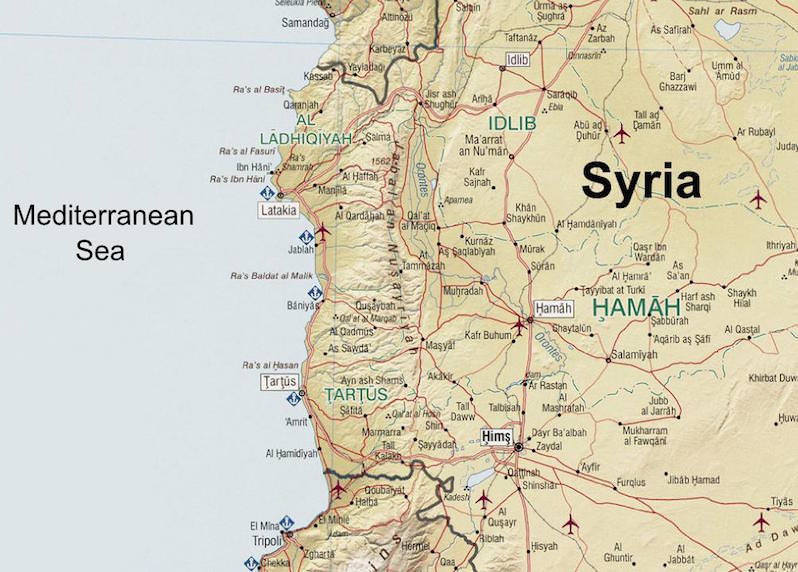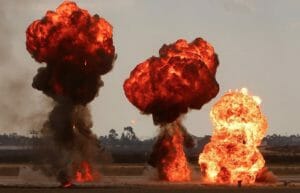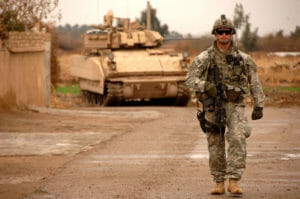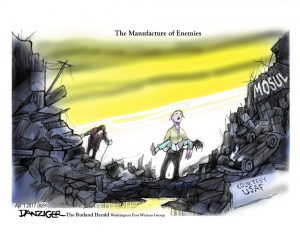Russian Explanation of the Mass Poisoning in Syria Could Be True
Evidence shows the deadly poison could have come from the bombing of an ammunition depot, not from a nerve gas attack.
By Theodore A. Postol
Map of Syria. (Wikimedia)
Theodore A. Postol is professor emeritus of science, technology and national security policy at the Massachusetts Institute of Technology and a specialist in weapons issues. At the Congressional Office of Technology Assessment, he advised on missile basing, and he later was a scientific consultant to the chief of naval operations at the Pentagon. He is a recipient of the Leo Szilard Prize from the American Physical Society and the Hilliard Roderick Prize from the American Association for the Advancement of Science, and he was awarded the Norbert Wiener Award from Computer Professionals for Social Responsibility for uncovering numerous and important false claims about missile defenses.
I have been examining the possibility that the April 4 attack in which a number of Syrian civilians and animals were killed, apparently by some kind of poison, hit an ammunition dump as claimed by the Russians. Videos taken on the morning of the attack show explosive debris clouds from four targets that were hit and provide strong circumstantial evidence that this Russian explanation could be true.
One of the clouds is quite distinctly different from all the others. The stem of this debris cloud has a base area that is five or more times larger than the cloud-stem bases of the other bomb debris clouds. The evidence is consistent with the possibility that this debris cloud was created by an initial explosion, followed by a series of secondary explosions. This situation would be expected if the site was, in fact, an ammunition dump.
Evidence of bomb hit on possible ammunition and chemical storage site.
I also have looked up data on poisonous gases that could be generated by the combustion of plastics, and have inspected photographs of the dead and dying from the Bhopal, India, chemical accident of Dec. 2-3, 1984. Many of the symptoms of the victims from the Bhopal catastrophe are similar in appearance to those observed in victims of the attack in Khan Shaykhun, Syria.
Images of poisoned victims of the gas release from a chemical pesticide plant in Bhopal, India, on Dec. 2-3, 1984.
In Bhopal, the gases released were not only extremely toxic but also were capable of burning the skin and eyes. The immediate and most deadly effect of these gases was when they were inhaled. The gases reacted with water in the lungs and created a large generation of fluids that caused victims to drown in their own lung fluids. This effect led to some victims showing foaming at the mouth and nose—an effect that can be generated from many toxic gases and is not unique to nerve agents.
There is no apparent evidence of burns from caustic gases in the pictures of alleged victims from the Khan Shaykhun event. However, the case of Bhopal is distinctly different because of a particular pesticide component that was released during the accident. There is no doubt that a simple mass fire that involves plastics can produce very dangerous materials like phosgene, carbonyl chloride, hydrogen cyanide, and a variety of highly toxic and dangerous organic compounds. One could expect a considerably more toxic release of gases if an ammunition dump was hit, a facility where a variety of chemicals could be stored, including precursors for the production of nerve agents.
Summary of toxic gases that can be created from combusting plastics. Does not include toxic gases that can be created from other materials released in accompanying explosions.
This evidence is not proof that the Russian explanation for a mass poisoning is correct. But given that there is no evidence to support the American alternative explanation—a sarin release from an airdropped munition at a site identified by the White House Intelligence Report—this additional data does provide some information that is relevant to the ongoing discussions on this matter.
Theodore A. Postol can be reached at [email protected].
Your support matters…Independent journalism is under threat and overshadowed by heavily funded mainstream media.
You can help level the playing field. Become a member.
Your tax-deductible contribution keeps us digging beneath the headlines to give you thought-provoking, investigative reporting and analysis that unearths what's really happening- without compromise.
Give today to support our courageous, independent journalists.




You need to be a supporter to comment.
There are currently no responses to this article.
Be the first to respond.